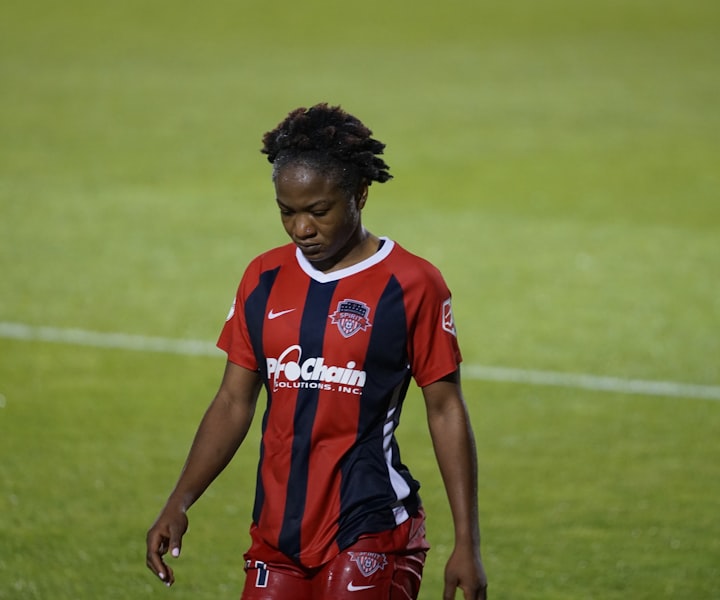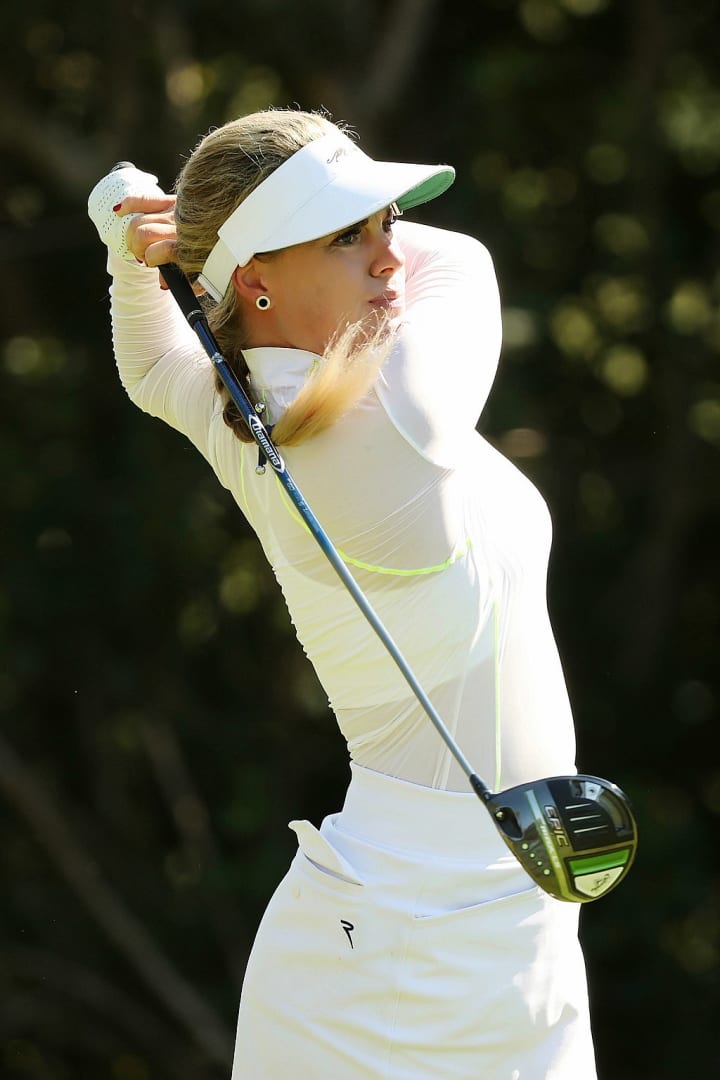Why Demographics Are Indeed Destiny for the Growth of Women’s Professional Sports
Recent research shows that younger Americans are far more likely to follow women’s pro sports than their older counterparts. This article explores what the surging interest in women’s professional sports - of all kinds - means for the wider sports world moving forward.

Overview
One thing we know that holds true throughout the history of American sports is this: There is - and has always been - an ongoing evolution when it comes to the popularity and interest in specific sports. There was a day, back in the 1930’s, 40’s and 50’s, that baseball, boxing and horse racing were the 3 most popular sports in the land. And while football had done “well enough” for decades prior, the 1960’s and 1970’s were pivotal - with television, with technology innovations, and with the full integration of college football - in laying the groundwork for both professional and college football to become the big money, dominant sports that they are today. And what are some of the major sports today have not had smooth paths to their places of prominence today. The NBA’s ratings were so bad in the 1980’s that even many of their playoff games were shown on a delayed basis, rather than being shown live. The then-fledgling UFC was almost banned by the U.S. Congress in the mid-1990’s, with Senator John McCain labeling mixed martial arts not a sport, but “human cockfighting.”
Demographics do, no doubt, play a huge role in the growth - and decline - of major sports. On the negative side, professional baseball is seen as being in a difficult position today, as MLB’s most ardent fans are older (and whiter), with the sport struggling to draw younger, diverse fans and to foster and develop youth players. Likewise, interest in professional golf skews older as well, with youth participation in the sport lagging. Demographics can, of course, also work favorably in driving the popularity of a sport to become a “major” sport in America. Only now are we really seeing soccer being regarded as a major American sport, something that was forecast as far back as the 1970’s and 80’s to be simply a matter of inevitability due both to surging youth participation in the sport and to the changing demographics of the United States, with an expanding immigrant population in the country. The popularity of pro soccer has surged to never before seen levels today in the U.S., with Americans not just showing intense and growing interest in the MLS (Major League Soccer) but indeed in the major global leagues (i.e. the English Premier League and LaLiga), teams and stars of what is, of course, known as “football” in the rest of the world.
And today, recent research shows that the “demographics as destiny” model that pro soccer has followed in the United States is working in much the same way not just for one women’s professional sport, but in truth, for all of them. Age is the key factor in determining if one is - or would be - interested in women’s professional sports, from the WNBA (Women's National Basketball Association) to the NWSL (National Women's Soccer League) to the LPGA Tour. And the data indicate that with younger people today demonstrably outpacing their older counterparts in the interest they show in following and viewing all women’s pro sports, interest in - and the value of - all women’s professional sports leagues and their teams and players will only grow as time marches forward. In this article, we review the latest data in this regard and analyze what all of this means for professional women’s sports of all sports looking into the future.

The Youth Perspective on Women’s Pro Sports
The data analyst firm, CivicScience, recently published a research report (“50 Years After Title IX, Women’s Sports More Popular Than Ever Among Youngest Americans”) where they, like many in the media, looked at the 50th anniversary of the enactment of Title IX, the landmark federal legislation that has proven to have a huge impact on the growth of women’s sports across America. This “golden anniversary” of the law has drawn significant media attention on just how monumental what was a small clause in one of those long, lone omnibus bills that Congress passes has had in the lives of millions and millions of American women. And FYI, if you want to see a great documentary that will educate you just how impactful Title IX has been in secondary and post-secondary education - and beyond - over the past 50 years, do watch the ESPN documentary, “37 Words!”
The CivicScience researchers sought to analyze Americans’ awareness of Title IX today and look at the link between that factor and people’s interest in women’s professional sports today. Their findings showed a direct tie between the two, as the more familiar and knowledgeable a person was with Title IX, the more likely they were to be interested in the emerging women’s professional sports scene. Age was found to be the key determining factor here, more so than political affiliations or any other demographic factor, as young adults were found to be far more familiar with Title IX than the overall population (see Figure 1 [Familiarity with Title IX As It Relates to Women’s College Sports, by Age]).
Figure 1: CivicScience - Familiarity with Title IX As It Relates to Women’s College Sports, by Age
Source: CivicScience, “50 Years After Title IX, Women’s Sports More Popular Than Ever Among Youngest Americans,” June 2022 (Used with Permission)
The CivicScience researchers believe that this is because younger people today are themselves still on the front lines of Title IX battles, as colleges and universities are still being forced to adapt to the mandates of the law in their athletic programs. As the author of the report, Zack Butovich, put it bluntly:
“While this (the awareness of Title IX among young adults) may seem surprising to some, it makes sense when considering the avalanche of lawsuits lobbed under Title IX over the last several years, driven by Millenial and Gen Zer athletes tired of noticing the obvious disparities among athletic facilities, opportunities, and overall funding.”
One need look no further than last year’s scandal involving the disparity between the men’s and women’s basketball Final Four funding, facilities, and amenities provided by the NCAA than to see that such issues are still being uncovered fifty years after the law’s passage.
Now from a practical standpoint, younger adults’ growing interest in women’s pro sports is much more than a point of academic interest. In reality, the strong correlation between a person’s age and their likelihood to follow women’s professional sports, across the board, means that yet again, demographics will very likely prove to be destiny when it comes to the future of women’s pro sports. Indeed, the age wave of interest in all women’s professional sports leagues bodes well - very well - for existing leagues - and their stars - to grow in fandom, notoriety, and yes, revenue, in the coming years. It also means that there are abundant opportunities for new sports leagues and ventures to be formed around women’s sports moving forward.
Just how strong is this correlation between age and interest in women’s professional sports? Let’s compare CivicScience’s findings from its large survey of Americans conducted just this month (June 2022) in regards to interest levels (gauged by asking how closely they follow each sport) in four major women’s professional sports:
- The NWSL (National Women's Soccer League)
- The WNBA (Women's National Basketball Association)
- Women’s UFC
- Women’s Tennis.
Figure 2 (CivicScience - Americans’ Interest Level in 4 Major Women’s Professional Sports) shows the overall level of interest that Americans have in these four women’s sports…
Figure 2: CivicScience - Americans’ Interest Level in 4 Major Women’s Professional Sports
Source: CivicScience, “50 Years After Title IX, Women’s Sports More Popular Than Ever Among Youngest Americans,” June 2022 (Used with Permission)
… while Figure 3 (CivicScience - Americans’ Interest Level in 4 Major Women’s Professional Sports, by Age) breaks down interest levels in each sport by age group.
Figure 3: CivicScience - Americans’ Interest Level in 4 Major Women’s Professional Sports, by Age
Source: CivicScience, “50 Years After Title IX, Women’s Sports More Popular Than Ever Among Youngest Americans,” June 2022 (Used with Permission)
When one digs into the numbers, the CivicScience survey shows that young adults not just outpace the general population's interest in all women’s sports by a small margin. Rather, their findings show that there are significant disparities across all four women’s pro sports included in this survey between the youngest adult age groups and their older counterparts. And while interest levels were found to indeed be far different among Americans for all women’s pro sports between age groups, the gaps are particularly high in the area of women’s team sports.
For instance, in regards to Americans’ interest levels in women’s professional soccer, looking at the results shown in Figure 2, only 3% of the general population said in this recent survey that they followed the NWSL “very closely” and 19% said that they followed the league “somewhat closely.” This means that almost 80% of Americans, overall (78%), do not follow women’s pro soccer. Yet, looking at CivicScience’s survey results in Figure 3, where interest levels are broken down by age groups, younger Americans are far more interested in the NWSL than their older counterparts. Their results showed that while only 8% of those ages 35 and 54 and 11% of those 55 and older followed the NWSL at all, fully 60% of those between 18 and 24 and 39% of those ages 25 and 34 followed the women’s pro soccer league! That is an interest gap that is not only statistically significant, but one that is large enough to see that younger Americans have a keen interest in women’s professional soccer that bodes well - very well - for the growth of the league in the future and portends great opportunities for its teams and the stars of the sport to be highly marketable going forward.
Likewise, we see similar results in regards to Americans’ interest levels in the WNBA, where younger segments of the American population follow women’s pro basketball far more closely than their older counterparts. As can be seen in Figure 3, almost half (49%) of those 34 and under closely follow the WNBA, in contrast to only 12% of those who are 55 and older and just 7% of those between the ages of 35 and 54 (and in fact, in that age cohort, no one surveyed said that they followed the WNBA “very closely!”). So, in the same way that the high level of interest found in young adults, women’s pro basketball in the United States appears positioned for significant growth over the coming years. This is because those who have the highest interest in the WNBA today will age into becoming fans who will be better able, as they enter their prime earning years and have more disposable income, to support the league and its teams directly and to spend on merchandise associated with the WNBA and its stars. And so looking ahead, both the leading women’s professional team sports leagues - the NWSL and the WNBA - have very favorable demographic trends working in their favor from a strategic standpoint.
The picture is much the same, yet just a little different, when it comes to the disparity in interest levels between younger and older Americans in women’s individual sports. As can be seen in Figure 2, overall interest in “Women’s UFC” (Mixed Martial Arts, or MMA) and in “Women’s Tennis” was found to be less than that found for the NWSL and the WNBA. And taking a deeper dive into the results from the CivicScience research by age group shown in Figure 3, what can be seen is that while the gaps are indeed there based on age, overall interest levels in women’s individual pro sports - at least the two sports they included in their survey, is not nearly as high as what was found in regards to women’s professional team sports. Specifically, those who said that they either very closely or somewhat closely follow either women’s UFC in the 18-24 (35%) and 25-34 (26%) age groups or women’s tennis [18-24 (35%) and 25-34 (25%)] are far less than those who expressed having interest in women’s pro soccer and basketball. Based on these findings, it would appear that those in charge of existing women’s professional individual sports do have an opportunity to grow their sports with a favorable demographic age wave of interest in them, but the strength of this trend does not appear to be of the same magnitude - at least in regards to the two individual sports included in the recent CivicScience survey effort.

Analysis
Speaking as a strategic management consultant and professor (and yes, a sports fan myself), I strongly believe that these findings portend significant opportunities for the growth of not just existing women’s professional sports leagues, but perhaps for the development of even more women’s pro team sports leagues, perhaps in areas like lacrosse, volleyball, beach volleyball, flag football, and even gymnastics where there are either nascent leagues or likely leagues yet to be developed. In regards to the disparity in interest levels found between age cohorts in regards to women’s team versus individual sports, I think that there is one caveat that must be pointed out. Quite interestingly, the CivicScience survey did not include a few noteworthy women’s professional individual sports, including golf (the LPGA [The Ladies Professional Golf Association]) and bowling (the PWBA [The Professional Women’s Bowling Association]). It would have been interesting to see how these sports, which skew older, “play” with younger audiences. However, as with any research effort, the CivicScience researchers likely concentrated on these four due to their present notoriety, knowing that they had practical limits in just how deep they could go with those being surveyed to garner accurate results.

In the end, women’s professional sports have a very favorable environment for growth in fan interest. Yes, the growth in participation among young women in sports themselves, facilitated in large part through the increased opportunities afforded by Title IX, is one key factor. Female sports participants become fans - and in time parents, who then help facilitate a whole new generation of fans and participants in women’s sports - a virtuous cycle indeed! And yes, just by perusing what is available today on your ESPN+ account to view, advertisers and television networks are taking note of the growing interest in women’s sports overall and in the demand for women’s professional sports programming! And so a decade from today, we should well see far more female professional sports than there are at present, creating both newfound opportunities for thousands of women to continue their sports careers and more women’s sports events, leagues, and stars for fans - of all ages and genders - to follow! Speaking as a sports marketing expert and yes, a sports fan, I personally can’t wait to see how this develops!
++++++++++++++++++++++++++++++++++++++++++++++++++++
About David Wyld
David Wyld is a Professor of Strategic Management at Southeastern Louisiana University in Hammond, Louisiana. He is a management consultant, researcher/writer, publisher, executive educator, and experienced expert witness. You can view all of his work at https://authory.com/DavidWyld.
Social Media Links to David Wyld:
About the Creator
David Wyld
Professor, Consultant, Doer. Founder/Publisher of The IDEA Publishing (http://www.theideapublishing.com/) & Modern Business Press (http://www.modernbusinesspress.com)







Comments (3)
It's worth everything you put into sports
I can tell your passionate about sports. I can see you being excited when writing this. I also could tell that you know plenty about sports as well. I never watch sports myself but just your excitement kept me reading. Great job
Really Impressed by your thoughts!